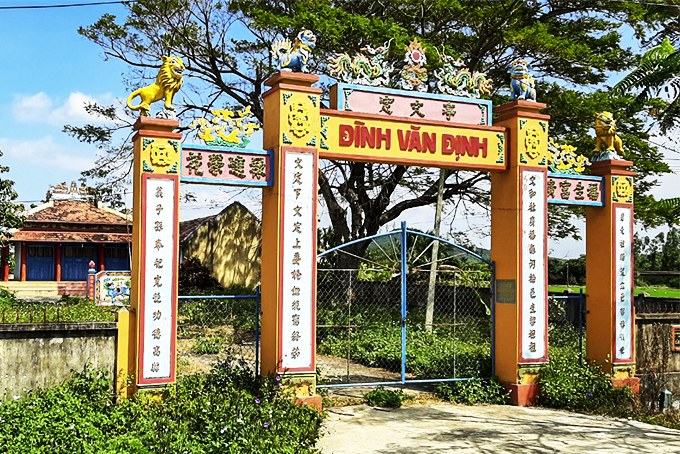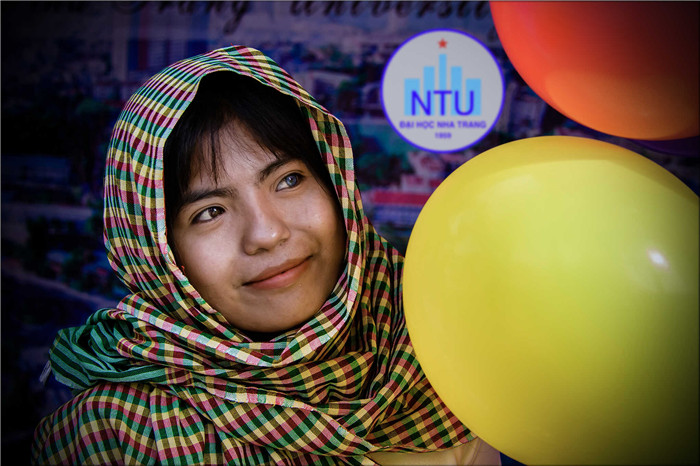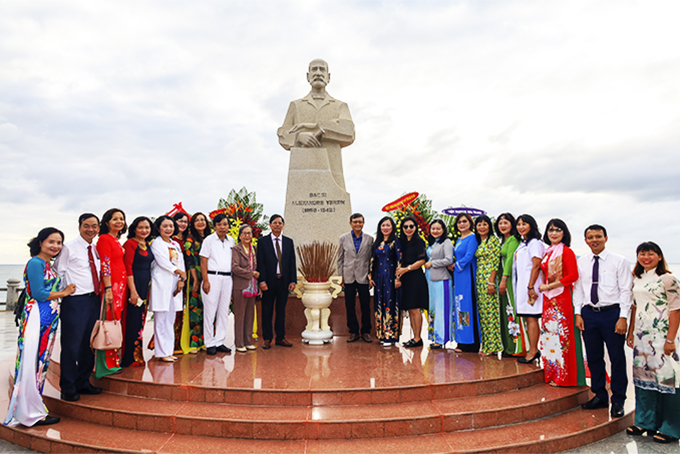
Banyan trees, water wharfs, and communal houses are the symbolic images of Vietnamese villages. Over time, banyan trees and water wharfs have gradually disappeared; only communal houses still remain, not only in villages but also in many urban areas.
Banyan trees, water wharfs, and communal houses are the symbolic images of Vietnamese villages. Over time, banyan trees and water wharfs have gradually disappeared; only communal houses still remain, not only in villages but also in many urban areas.
Precious heritages of forefathers
There are many communal houses in Khanh Hoa Province, especially in Nha Trang City, Cam Ranh City, and Ninh Hoa Town. There are about 250 communal houses of different areas across the province, 150 communal houses of which were classified as provincial monument and one communal house (Phu Cang Communal House, Van Ninh District) was recognized as national monument. About more than 600 imperial decrees conferred by the Kings of Nguyen dynasty are being preserved at the communal houses which were classified as monuments.

|
Communal houses in Khanh Hoa often have small area and simple architecture without many sophisticated carvings. According to folk culture researcher Ngo Van Ban, communal houses in Khanh Hoa were usually built in the center of residential areas or near village gates and near main roads. The front of communal houses is considered very carefully before construction to bring peace and prosperity for villagers. In the initial stage of settlement, communal houses were often thatched ones. When living conditions got better, communal houses were rebuilt with more solid materials. Nowadays, communal houses are mainly used as places of worship. Communal house worshipping ceremonies are often held in spring or autumn annually or biennially, bringing festive atmosphere for the people in the area.
Need for more popularization
Communal houses are important to local people in term of cultural and spiritual values. Therefore, it is necessary to introduce these values to young generations and tourists in and outside the country. It may be advisable that the province’s culture sector cooperates with the education sector and localities in the province to select typical communal houses with favorable conditions to serve as places for sightseeing and extra-curricular activities for pupils. Contemplating communal houses with their own eyes and listening to stories told by patriarchs can help pupils have good impression of communal houses as well as their values.
Visiting communal houses in Nha Trang City such as Lu Cam, Ngoc Hoi, and Phu Vinh used to be incorporated into countryside tour programs of some travel agencies in Nha Trang. However, this activity cannot continue due to the lack of regulations on cooperation between communal houses and travel agencies. In order for communal houses to be exploited effectively as a tourism product, management boards of communal houses need to improve services for visitors. Meanwhile, travel agencies need to offer a reasonable amount of money to communal houses.
Khanh Hoa has the potential for cultural tourism in general and communal houses in particular; however, this potential hasn’t been exploited well. It is time for the province to review and resolve the matter, according to Nguyen Van Thich, head of Khanh Hoa Folk Music Branch.
Giang Đinh
Translated by H.N










